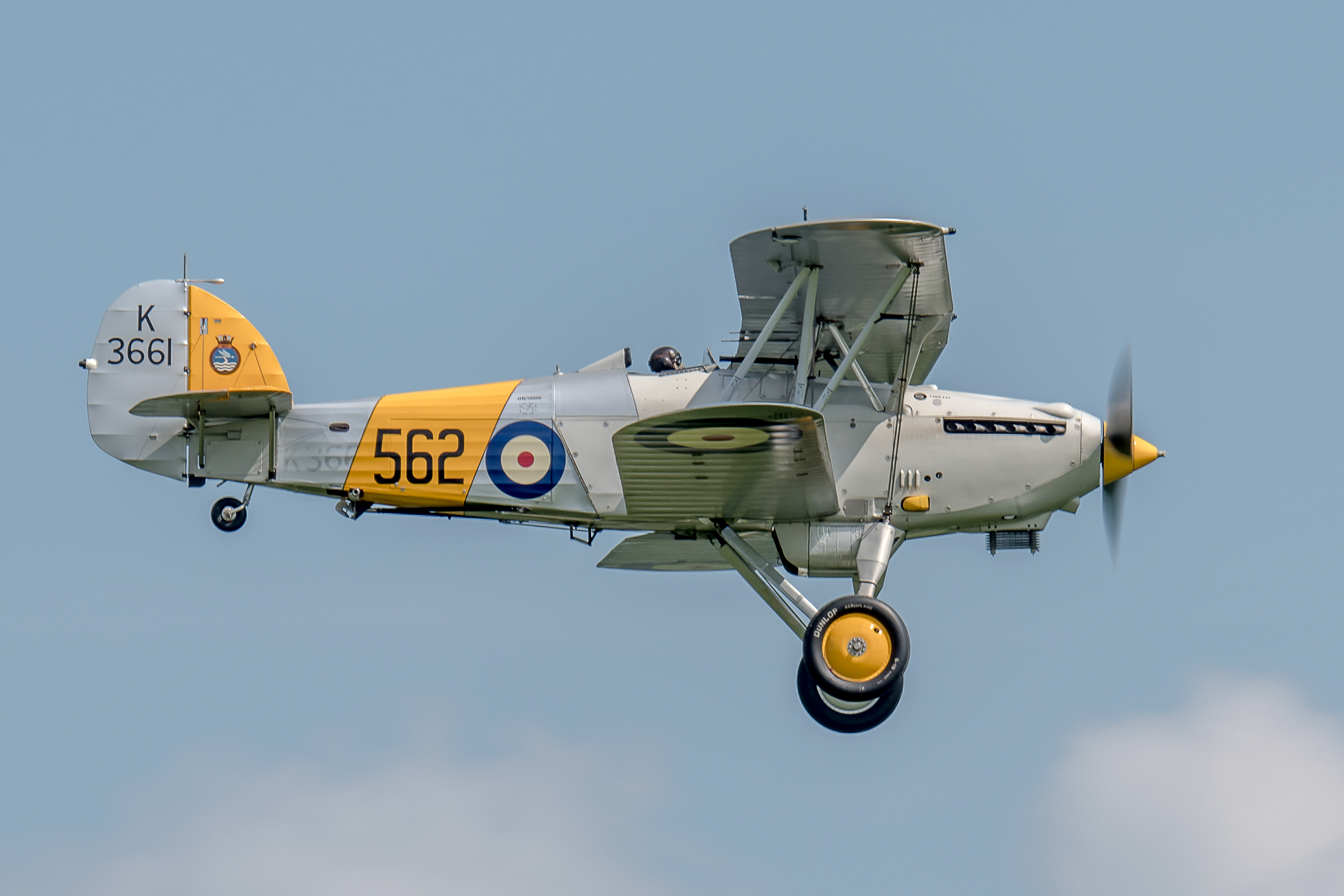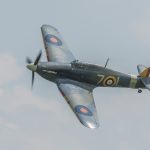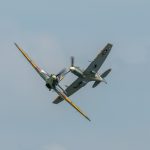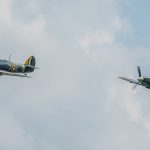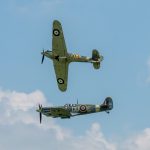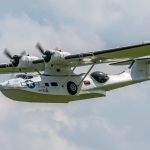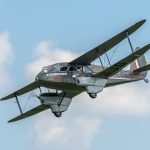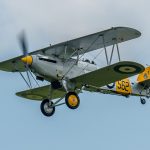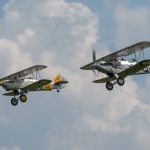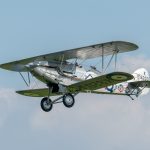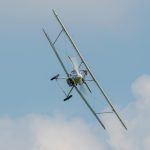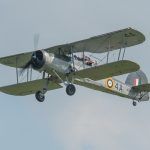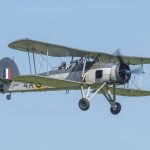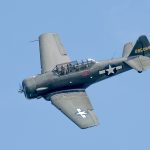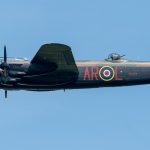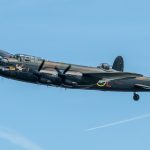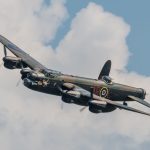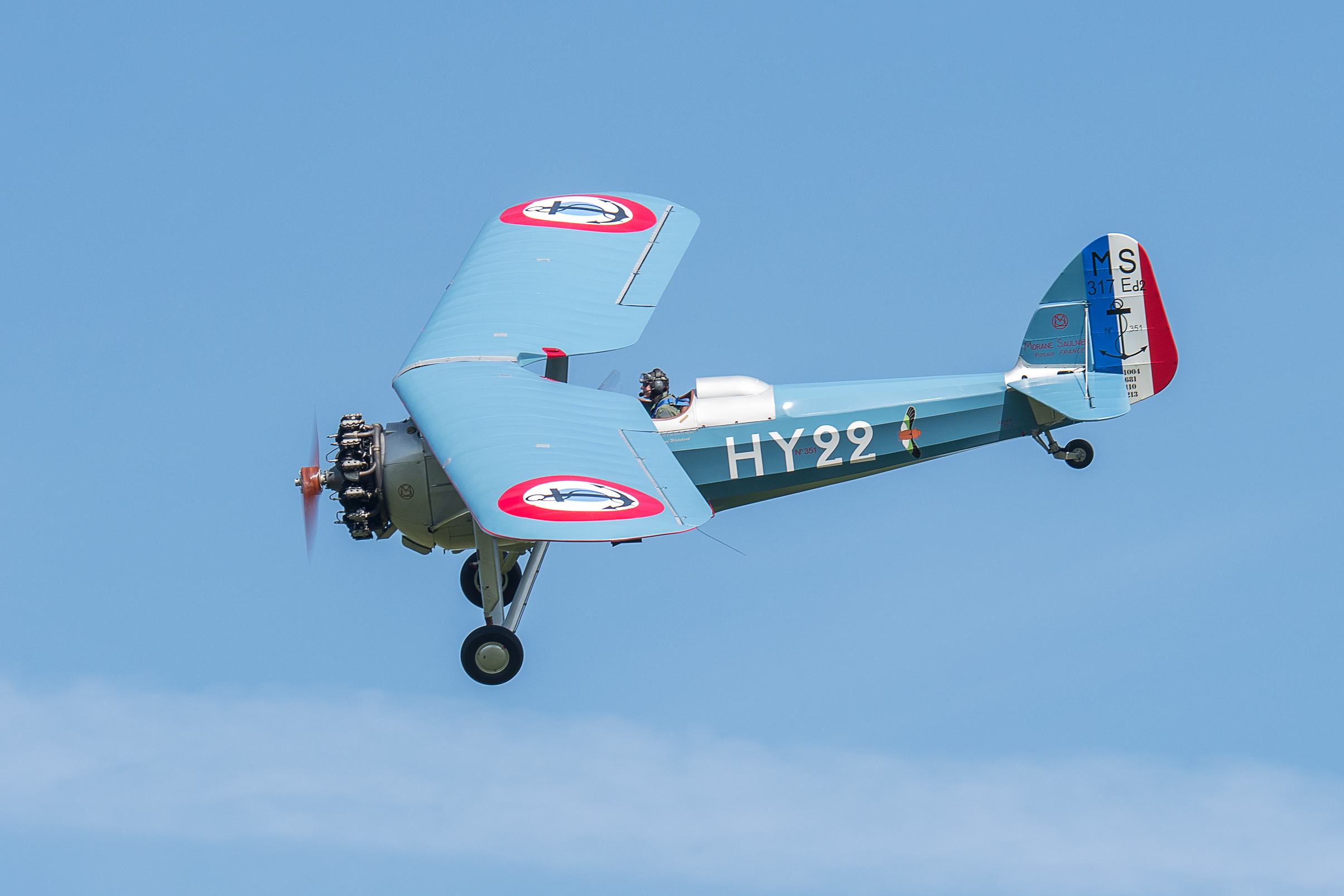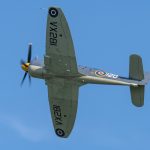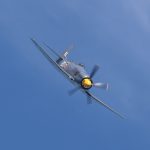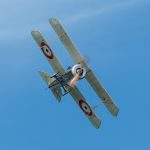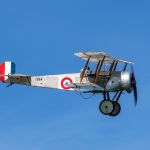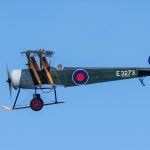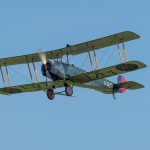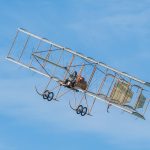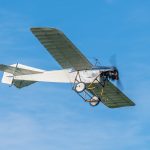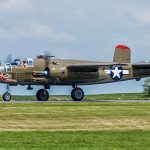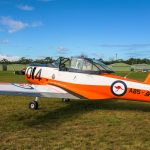The Shuttleworth Collection’s ‘Fly Navy’ Air Show Report
by George Land
The Shuttleworth Collection’s ‘Fly Navy’ air show has fast become a favourite, not-to-be-missed event at the world-famous flying museum near Biggleswade in Bedfordshire, England. For the aviation enthusiast, as well as the general public and families looking for a great day out, this year was no exception and the show’s reputation continues to grow, with the show regularly selling out.
The natural amphitheatre that is the main car park and viewing area between the hangars and the runway, along with the general layout of the runways, make for an almost perfect viewing area with plenty of top side banana passes and a clear racetrack patterns in plain view of the main spectator zone.
As suggested in the event’s name, it’s main focus was to showcase the history of naval aviation in all aspects, from the large WWII-era flying boats such as the Catalina to the diminutive Bristol Scout of WWI, from the fast and muscular Hawker Sea Fury post-war naval fighter to the slower and much loved Fairey Swordfish biplane torpedo bomber.
Not to be forgotten were the trainers that helped mould the pilots who flew them from both Royal Naval Air Stations on terra firma and the heaving decks of aircraft carriers in stormy seas. These pilots would often go up in some of the most hazardous conditions to protect the fleet or supply convoys, not to mention carry the attack to enemy ships and submarines on the open ocean, or even in port, such as the famous Swordfish attack upon the Italian fleet moored in the harbor at Taranto during November, 1940.
The ‘Fly Navy’ day celebrates those who designed and built naval aircraft, the veterans who kept them flying in all conditions and of course the pilots and crews who bravely went to war in them across the globe, often in the most arduous conditions.
The line up of naval and land-based aircraft taking part in the show is wide ranging, varying from designs dating back to the early 1900s until the 1960s.
The action packed and fast moving show, opened with the Shuttleworth Collection’s Hawker Sea Hurricane Mk.lb and their newly-restored Supermarine Spitfire Mk.Vc. Next to appear was the first of the visitors, a Hawker Fury Mk.ll belonging to Anglia Aircraft Restorations and operated by Air Leasing. The former Iraqi Air Force fighter is a land-based variant of the Sea Fury, and is currently marked as the first prototype, serial SR661. The thoroughbred fighter gave a classic display that amply showed the power and rate of climb afforded by it’s Bristol Centaurus 18-cylinder radial engine.
Following the Fury came the lumbering form of Plane Sailing’s Canadian Vickers Canso flying boat. The pace then slowed even further as first the Westland Wasp HAS Mk.1B naval helicopter took over the skies. Then came the classic, elegant lines of the de Havilland DH89A Dragon Rapide in close formation with the Collection’s Avro C.XlX, a civilian variant of the Avro Anson.
Speeding things up slightly was arrival of two of my personal favorites, the silver wings of the Historic Aircraft Colletion’s Hawker Nimrod Mk.ll and Demon Display’s Hawker Demon Mk.I. Then classic British trainers came to the fore with the early 1930s Avro 621 Tutor and deHavilland DH82A Tiger Moth followed by a late 30s Miles Magister monoplane and a late 40s deHavilland Canada DHC-1 Chipmunk 22. Then came a workhorse of the WWII Royal Navy’s Fleet Air Arm, Fairey Swordfish Mk.I W5856 operated by the Royal Navy Historic Flight. She received an escort from a classic American Advanced Trainer, North American AT-6D Texan 42-85068.
Next to appear in the sky was a favorite of the UK air show circuit, the Battle of Britain Memorial Flight’s Avro Lancaster B.I PA474. She used the theatrical stage that is Shuttleworth to maximum effect with three superb topside passes, displaying this magnificent aircraft to her fullest.
The next pair featured a representative of the Aéronavale, the French naval air arm, in the Morane Sulnier MS.317 parasol-wing trainer alongside a deHavilland DH.60 Cirrus Moth.
Another Shuttleworth classic followed with the collection’s Westland Lysander Mk.lllA in its overall black Special Operations Executive scheme. The nimble liaison aircraft showed just why it was so successful sneaking into and out of occupied Europe at night to support the SOE’s clandestine operatives.
Then the pace really stepped up with the appearance of the Royal Navy Historic Flight’s Hawker Sea Fury T.20 in what turned out to be, in my opinion, the outstanding display of the day, combining sheer speed with grace and control in a display that was full of fast climbs and even faster swooping dives and turns.
After the braun displayed by the Sea Fury, the pace mellowed again with a performance by a pair of classic Westland Gazelle helicopters. This was followed by a host of WWI-era aircraft types from the Royal Naval Air Service and Royal Flying Corps, featuring a Bristol Scout, Avro 504K, as well as the Bristol F2B Fighter, Sopwith Camel and Triplane.
This was rounded out by a spirited display from The Fighter Collection’s FM-2 Wildcat and FG-1D Corsair, both of which are in Fleet Air Arm colors. At the end of their display these two were joined by the Hawker Demon, Sea Hurricane and Spitfire for a Heritage Flight sequence.
As the wind had dropped sufficiently, the show finale came with the appearance of three Shuttleworth’s ‘Edwardians’, so named because they date back to the reign of King Edward VII (1901 – 1910). These aircraft included the 1910 Deperdussin monoplane and replicas of a 1910 Bristol Boxkite and 1910 Avro Triplane, both of which were built for the 1965 film Those Magnificent and Their Flying Machines, and a fitting end to what was one of the UK’s best air shows so far this season.
Many congratulations to everyone at the Shuttleworth Collection for all of their efforts. The pilots, ground crew, catering staff and the many volunteers managed to run a sizable show both smoothly and with a warm and friendly atmosphere.
WarbirdsNews would like to thank George Land very much for his marvelous images and recollections from the Shuttleworth Collection’s Fly Navy display this past June, and we look forwards to more of his reports in the future!







